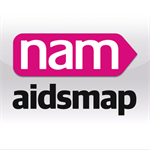Posted on July 22, 2014
Source: aidsmap

An oral regimen of three direct-acting antivirals plus ribavirin taken for 12 weeks demonstrated a sustained virological response rate of 94% for people with both HIV and genotype 1 hepatitis C co-infection in the TURQUOISE-I study, delegates heard on Monday at the 20th International AIDS Conference (AIDS 2014) in Melbourne, Australia.
People with HIV and hepatitis C virus (HCV) co-infection generally experience more rapid liver disease progression than people with hepatitis C alone and do not respond as well to interferon-based therapy. Direct-acting antivirals that target different steps of the HCV lifecycle offer the prospect of shorter treatment, fewer side-effects and higher cure rates for people with HIV and HCV co-infection as well as people with HCV mono-infection.
Mark Sulkowski from Johns Hopkins University School of Medicine and colleagues conducted the phase 3 TURQUOISE-I trial to evaluate the safety and efficacy of AbbVie's 3D direct-acting antiviral regimen for people with HIV and HCV co-infection.
The 3D regimen consists of the HCV protease inhibitor ABT-450, a 100mg boosting dose of ritonavir and the NS5A inhibitor ombitasvir (formerly ABT-267) in a once-daily fixed-dose co-formulation, taken with the twice-daily non-nucleoside HCV polymerase inhibitor dasabuvir (ABT-333) and 1000-1200 mg/day weight-based ribavirin.
Prior to testing in people with co-infection, extensive drug-drug interaction studies in healthy volunteers showed that the AbbVie drugs have no clinically meaningful interactions with tenofovir or emtricitabine (the drugs in Truvada), atazanavir (Reyataz) or raltegravir (Isentress). The ritonavir in the ABT-450 co-formulation also acts as a booster for atazanavir.